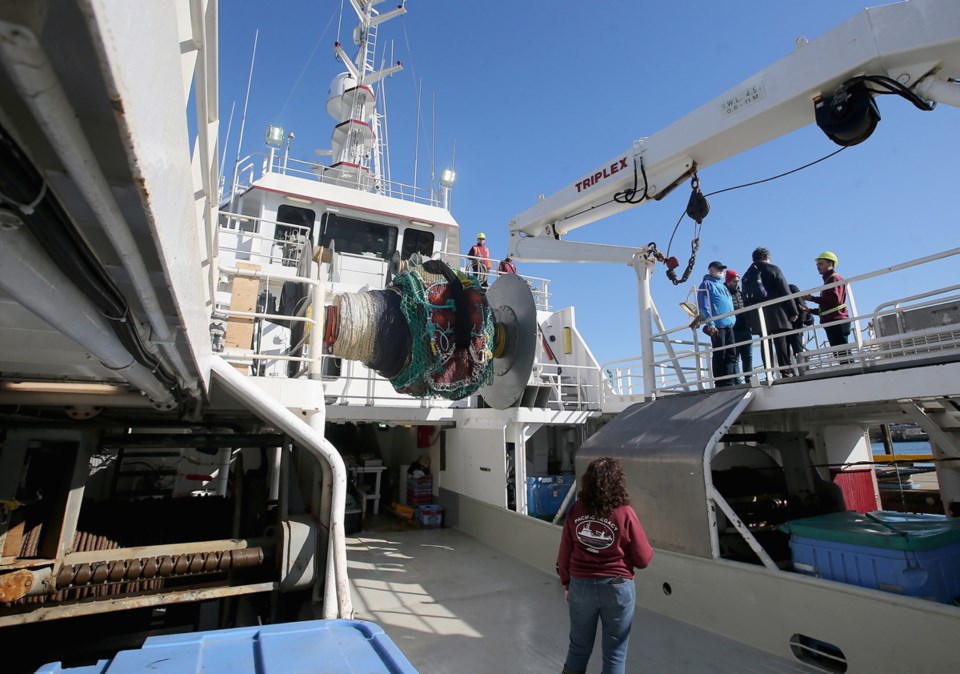An international scientific expedition is trawling far offshore for Pacific salmon even though some researchers chose to leave the ship as worries escalated about the coronavirus.
On March 11, the chartered commercial trawler Pacific Legacy No. 1 left Victoria Harbour for a 25-day trip, carrying a large net to haul in salmon for examination.
The vessel had been carrying three American scientists, along with three Russian and six Canadian researchers. U.S. scientists decided to return home when the vessel made a scheduled stop this week in Prince Rupert, said Nanaimo’s Richard Beamish, who is organizing the $1.45-million voyage with fellow scientist Brian Riddell.
Aside from some initial seasickness by the team, everyone is healthy, Beamish said.
So far, catches have been “remarkable,” he said. “The science is going to be outstanding.”
Catch numbers are two-to-three times larger than during last year's survey, Beamish said Thursday. Beamish and Riddell staged the first international survey in the Gulf of Alaska in the North Pacific in winter 2019 after raising more than $1 million.
Surveys are being carried out as many salmon stocks plunge. Fisheries and Oceans Canada is predicting this year's returns of salmon will be as low as in 2019.
Last year’s return of Fraser River sockeye salmon was the lowest on record and other salmon species came in below expectations as well and as strict rules were imposed to save certain stocks, such as chinook, the favourite meal of endangered southern resident killer whales.
Fishermen are fearing they will face another major loss to their livelihoods this year.
The scientific team is out on the water to try to figure out how salmon survive during the winters, how many are out in the ocean, and where they can be found.
Surveys are done in the winter because it is believed that the first winter at sea gives scientists a good idea of future survival rates. Also, the fish are not in the midst of heading back to their home rivers.
Little is known about where in the Pacific Ocean the different species of salmon spend the bulk of their lives.
“What we are finding is completely different than what we imagined,” Beamish said.
Large catches of pink and chum were hauled onboard outside of the Canadian 200-mile limit at the southern end of their survey. The vessel then headed west for more trawls.
Sockeye were hauled in this week ago at a stop about four miles within the U.S. zone, off northwest B.C., close to Dixon Entrance. Beamish said, “Scientifically we would have expected sockeye way out to sea. Last year we got sockeye in the middle of the Pacific so none of us would have expected sockeye salmon to be there.”
Upcoming research on the DNA of those fish will reveal where they are from.
“No matter what we find out, it will be new to science,” he said.
“It will start to fill in some of the missing pieces about what really regulates the abundance of sockeye once they leave the near-shore areas.”
This year, surveys in the southern part of the study areas will be repeated rather than going into the North Pacific because poor weather is forecast and because of the high numbers in earlier catches, Beamish said.
After fishing in Dixon Entrance, the vessel is heading west and then south. The final four to five days will be fishing off the west coast of Vancouver Island, he said. “That’s where I think we will find large concentrations of pink salmon.”
Financial support for this expedition came from the public and private sector, non-profit organizations and individuals. A third survey is planned for next year. It is being put on by the International Year of the Salmon, through the North Pacific Anadromous Fish Commission.



